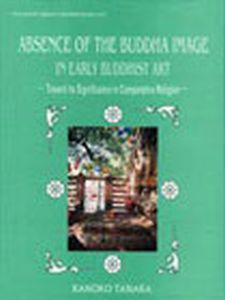
Contents: Preface. I. Introduction. II. Visible facts: 1. The role of 'Stupa-art' (Fine arts dedicated to the Stupa). 2. The basic composition of stupa-art. 3. A consideration of the visible facts. III. Possible interpretations: 1. The religious aspects. 2. The artistic aspects. 3. The political aspects. IV. The concept of the empty throne: 1. Its meanings for Buddhist people. 2. Its categories in comparative religion. 3. A discovery of its modernity. V. Conclusion. Appendix: What is the purpose of comparative religion? A five-point ethics to be obtained through the field-work. A list of visuals. A guide to the visuals. Tables. Figures. Illustrations. Plates. Select bibliography. Index.
"It is next to impossible today to even think of Buddhism without the presence of the Buddha image! The image of the Buddha, in truth, has not only come to symbolise the essence of Buddhism but is also a brilliant expression of the cultural/artistic achievements of the Buddhists since ancient times. Surprisingly, the Buddha image developed at a later stage of the evolutionary process; after the parinirvana of the Buddha, the Buddhists for a considerable time beheld the Buddha and experienced him in their own minds without taking recourse to the Buddha image itself. In Absence of the Buddha Image in Early Buddhist Art, Dr. Tanaka, a well-versed scholar, has for the first time ever explored the 'absence' of the Buddha image in Buddhist art--particularly in the period from third century BC to late first century AD--in order to rediscover the significance of this phenomenon.
"Dr. Tanaka observes Bharhut and Sanci sculptures to point out the most essential motifs and elements of stupa-art design--the visible facts pertaining to the absence of the Buddha image. The author studies the religious, philosophical, artistic and political significance of the visible facts, highlighting the concept of the 'empty throne' as the motif representative of that absence. She applies the 'empty throne' concept to the sanctuaries of monotheistic religions, and thus undertakes a comparative study of Buddhism and other religions, particularly, Zoroastrianism, Judaism, Christianity, Islam and Sikhism to suggest that present-day discussions on the linkage between religions can centre on this theme.
"The dexterous handling of the topic combined with the author's use of first-hand research material makes this an erudite study. The directness in the author's approach and the unwavering eye on the theme sustains the interest throughout. An abundance of visual material, i.e., drawings and photographs, and tables immensely aid in analysis of the visible facts. This intense work on a rich theme offers well-researched and interesting material that will be useful to scholars of religious studies, fine arts and even philosophy." (jacket)
